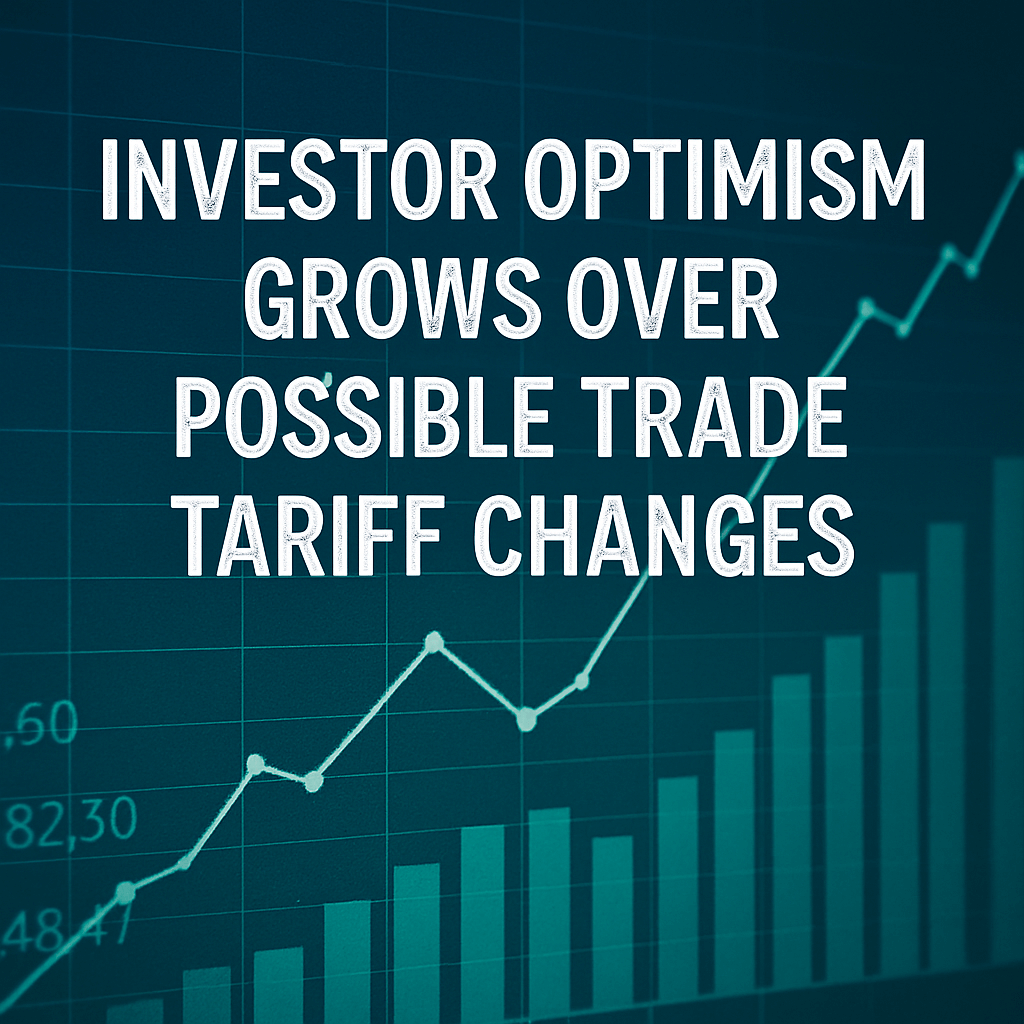Investor Optimism Grows Over Possible Trade Tariff Changes

Chinese equities experienced an uptick while European and U.S. markets faced challenges on Tuesday, as investors expressed cautious optimism regarding possible concessions from U.S. President Donald Trump concerning his latest tariff threats. U.S. stock futures retreated by 0.4%, contrasting with a 1.5% rise in Hong Kong’s markets.
Current Trade Tensions
The landscape of international trade continues to be fraught with uncertainty. President Trump recently escalated tensions by doubling tariffs on steel and aluminum imports to 50%, alongside imposing new restrictions on the transfer of chip design software to China. Trump claimed that Beijing had “totally violated” the terms laid out in the previously established U.S.-China tariff truce, which has understandably unsettled investors looking for stability.
EU and China Responses
- The European Union has issued threats of retaliation against the newly imposed metals tariffs, signaling its intent to protect its industries.
- Beijing’s response included a veiled warning, promising to take “resolute and forceful measures” to safeguard its rights and interests.
Despite these escalatory moves, investor sentiment appears to be buoyed by speculation that Trump might be amenable to reducing the harshest tariffs. This attitude, often referred to as the “TACO” (tariff concessions expected), seems to cushion markets from steeper declines.
The Path Forward: Potential Direct Talks
Recent reports suggest that President Trump may be eyeing a direct conversation with Chinese President Xi Jinping later this week, following a series of intense exchanges between the two nations related to trade. This proposed dialogue could indicate a willingness from the U.S. side to retreat from the most aggressive tariffs as an avenue to foster communication.
“As Trump has been anxious for the call, and China has not, this may hint at more U.S. retreats over trade taxes as a concession to bring China to the telephone,” said Paul Donovan, chief economist at UBS.
European and U.S. Market Performance
As investors grapple with these developments, European markets and U.S. futures were slightly down on Tuesday, with the Stoxx Euro 600 index declining by 0.2% and S&P futures trading down 0.4% prior to the opening bell.
Snapshot of Market Action
- The S&P 500 index marked a 0.4% increase on Monday, now showing a year-to-date rise of 0.9%.
- In early Tuesday trading, S&P futures were down by 0.5%.
- The Stoxx Europe 600 index also experienced a minor drop of 0.2%.
- In Asia, the markets had mixed performances, with Japan down 0.1%, while Hong Kong surged by 1.5% and Shanghai rose 0.4%. India’s Nifty 50 was down 0.7%.
- Bitcoin maintained its status at approximately $105,300.
Looking Ahead: Analysis from Experts
Market analysts are weighing the potential ramifications of recent tariffs against the backdrop of President Trump’s declining approval ratings and the increasing pressure from financial markets. Jim Reid, Deutsche Bank’s global head of macro research, noted, “It’s a difficult time to forecast right now given the relentless crossfire of trade headlines. But there’s a growing sense that we’re now on a turbulent but sustained path towards de-escalation.”
Experts underscore the notion that while the U.S. administration may hold a hawkish stance on trade, there are observable limits to this aggressive approach, especially as public sentiment shifts amid market turmoil.
Investors will be closely monitoring developments this week, primarily looking for tangible results from any proposed discussions between the U.S. and China, which could significantly impact market confidence moving forward.
Conclusion
In summary, while the landscape of global trade remains volatile, signs of possible concessions from the U.S. administration have ignited a cautious optimism among investors. As both markets and political landscapes evolve, the coming days could prove pivotal in shaping the future of U.S.-China trade relations.